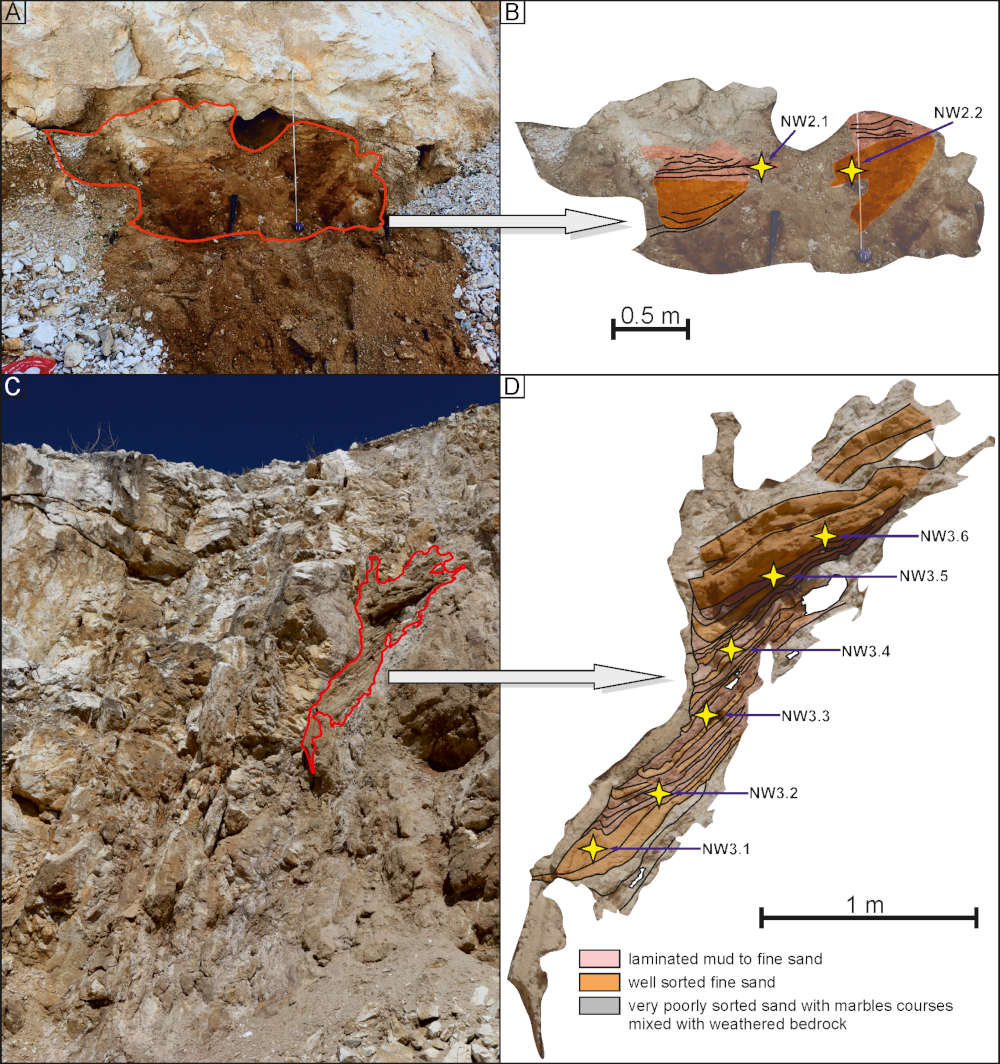Text:
The statement that the Sudetes are old mountains is an oversimplification. In fact, there is much evidence of old orogens in the Sudetes, but the mountains we see now are the result of relatively young tectonic movements. So far, however, there has been a need for a precise time frame for when the Sudetes appeared on the landscape due to the lack of sufficiently young Neogene rocks. Such sediments on the edge of the Śnieżnik Massif, hidden in karst voids, were discovered by Dr. Jacek Szczygieł together with Dr. Artur Sobczyk (Wroclaw University). The newly discovered paleokarst sediments with a rich Miocene palynological record in the Eastern Sudetes fill a gap in the reconstruction of the landscape and tectonic history of the Bohemian Massif during the Neogene. Palynological analysis showed the presence of numerous pre-Quaternary taxa, including paleotropical species, in the analyzed sediments. The results of pollen analysis indicate a warm and humid climate during the sedimentation of the New Waliszow karst deposits, along with the development of wetland vegetation (swamp forests, riparian forests, and shrub bogs) and mesophytic forests. The recorded taxa are typical of flat and hilly landscapes, preceding the development of the present mountain topography with relief >1000 m and the formation of the original European drainage tri-division in the area of the Sneżnik Massif. The palynostratigraphy of the paleokarst deposits indicates the onset of environmental changes in the Sudetes in the mid-Miocene (~15 ± 1.5 million years ago) due to accelerated tectonic uplift along the eastern boundary of the Upper Nysa Kłodzka Graben and the Orlica-Śnieżnik Dome tectonic block.
The results of the study were published in the journal Palaeogeography, Palaeoclimatology, Palaeoecology
Reference: Sobczyk, A., Worobiec, E., Olkowicz, M., Szczygieł, J., 2024. Mid-Miocene onset of the NE Bohemian Massif (SW Poland, Europe) growth, landscape evolution, and paleoenvironmental changes unraveled using paleokarst sediment palynology. Palaeogeogr. Palaeoclimatol. Palaeoecol. 640, 112107. https://doi.org/10.1016/j.palaeo.2024.112107
Note author: Jacek Szczygieł






